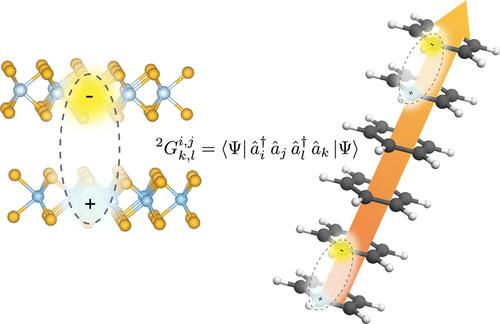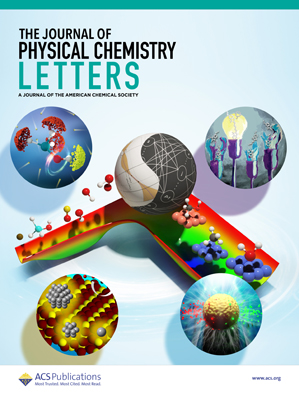A Molecular Perspective of Exciton Condensation from Particle-Hole Reduced Density Matrices
IF 4.8
2区 化学
Q2 CHEMISTRY, PHYSICAL
引用次数: 0
Abstract
Exciton condensation, the Bose–Einstein-like condensation of quasibosonic particle-hole pairs, has been the subject of much theoretical and experimental interest and holds promise for ultraenergy-efficient technologies. Recent advances in bilayer systems, such as transition metal dichalcogenide heterostructures, have brought us closer to the experimental realization of exciton condensation without the need for high magnetic fields. In this perspective, we explore progress toward understanding and realizing exciton condensation, with a particular focus on the characteristic theoretical signature of exciton condensation: an eigenvalue greater than one in the particle-hole reduced density matrix, which signifies off-diagonal long-range order. This metric bridges the gap between theoretical predictions and experimental realizations by providing a unifying framework that connects exciton condensation to related phenomena, such as Bose–Einstein condensation and superconductivity. Furthermore, our molecular approach integrates exciton condensation with broader excitonic phenomena, including exciton-related entanglement and correlation, unlocking potential advancements in fields like quantum materials and energy transport. We discuss connections between recent experimental and theoretical work and highlight the discoveries that may arise from approaching exciton condensation from a molecular perspective.

求助全文
约1分钟内获得全文
求助全文
来源期刊

The Journal of Physical Chemistry Letters
CHEMISTRY, PHYSICAL-NANOSCIENCE & NANOTECHNOLOGY
CiteScore
9.60
自引率
7.00%
发文量
1519
审稿时长
1.6 months
期刊介绍:
The Journal of Physical Chemistry (JPC) Letters is devoted to reporting new and original experimental and theoretical basic research of interest to physical chemists, biophysical chemists, chemical physicists, physicists, material scientists, and engineers. An important criterion for acceptance is that the paper reports a significant scientific advance and/or physical insight such that rapid publication is essential. Two issues of JPC Letters are published each month.
 求助内容:
求助内容: 应助结果提醒方式:
应助结果提醒方式:


